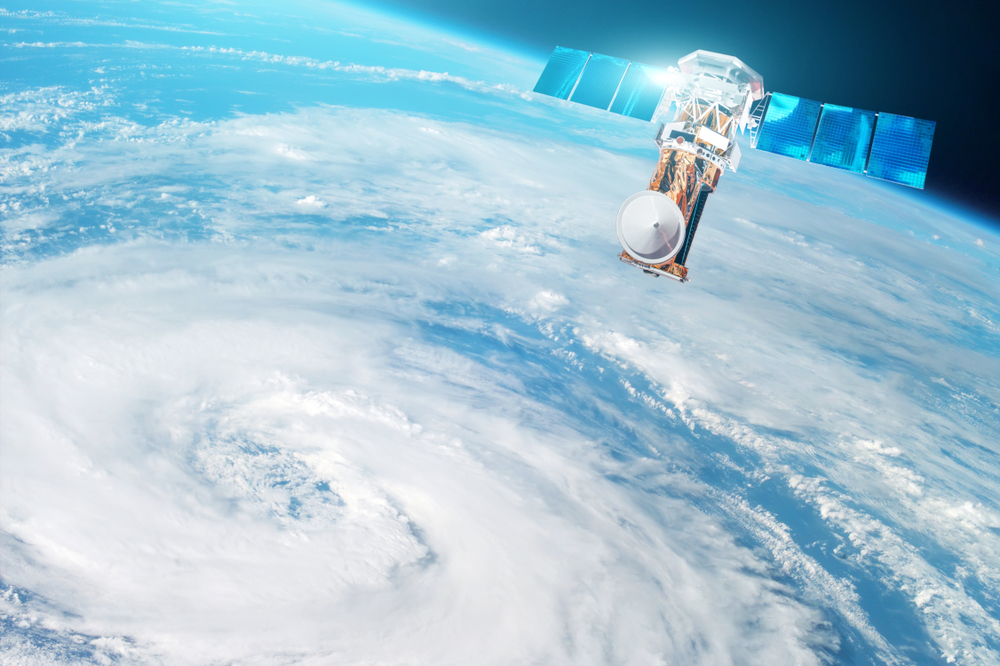In 2017 and 2018, Hurricanes Michael, Maria, Irma and Harvey – just four storms – combined to cause more than $300 Billion in damage and took more than 3,300 lives. These storms, which many people would consider, “100-year storms,” all happened in a 13-month span, and they illustrate a new reality for the United States – deadly and costly storms are happening with increased frequency and ferocity.
When these massive storms strike, an immediate response is necessary to save lives and bring services back to impacted areas. But responding to these types of disasters – from hurricanes to earthquakes to wildfires – comes with its own set of challenges. When these disasters take down the critical infrastructure in an area, they compromise some of the same systems and networks necessary for powering the disaster response and rescue effort.
Take terrestrial and cellular networks as an example.
Today’s military and government agencies rely on network-enabled tools and platforms to operate. This emergence of network-centric operations means that having access to their full set of mission-critical capabilities requires network connectivity. But what happens when terrestrial networks – like cellular networks – are down? How can these mission-critical capabilities be made available when the networks that deliver them are compromised?
The answer could be found in the satellites orbiting around the Earth. But to take advantage of satellites in disaster response, the government and military will need to plan ahead. Let’s take a detailed look at what satellite networks can deliver to the disaster response effort and explore some of the ways that the government can plan ahead to ensure that they’re available when they’re needed.
The services that can be delivered via satellite
In disaster response situations, operational and situational awareness are essential. Responders need to know where the people are that need help, and they need to know how to reach them. Maps drawn and compiled before a disaster are untrustworthy and unreliable – roadways can be flooded or destroyed. Real-time, up-to-date intelligence is necessary to help responders find areas of need and reach the people in need of assistance.
Many of the same tools being utilized by the military for Intelligence, Surveillance and Reconnaissance (ISR) can be utilized to bring this real-time data to the response effort. But high definition (HD) video from drones, and accurate, real-time GIS data (i.e maps) are large files that need high bandwidth connectivity to reach responders in the field.
The same can be said for communications. Response efforts need to be coordinated and responders need to be connected to enable collaboration and planning. When cellular networks are down, the ability for responders to communicate becomes limited to line-of-sight voice/text communication. Providing a high bandwidth network connection expands the communication options to include streaming HD video, enabling responders to connect with people around the globe.
The same connectivity enabling situational awareness and communication can also deliver critical life-saving expertise. For example, real-time video communications can be used in telemedicine, bringing remote doctors and specialists together with local medics/doctors to collaboratively see, diagnose and advise on a survivor’s condition, particularly those in need of specialized medical care.
Telemedicine, and other key support efforts, to these decimated locations can only be enabled by high bandwidth, low latency satellite communications. Satellite connectivity is not dependent on the presence and availability of terrestrial networks, making it the perfect solution for connectivity in disaster response situations.
Finally, today’s newest satellite technologies, like that from Medium Earth Orbit (MEO), are capable of delivering fiber-like connectivity with extremely low latency. The satellite throughputs can deliver fiber-like speeds, meaning that practically any video, data file or voice/text can be delivered out to the edge…but response time is still dependent on preplanning and having deployment kits ready in advance. .
Making satellite possible in disaster situations
Obviously, satellites are not dependent on an existing terrestrial network/infrastructure but communication through the satellites requires some ground equipment, specifically terminals. These terminals and antennas are necessary to take advantage of any satellite signal, and they may not be readily available in the event of a natural disaster.
That said, there is some precedent in the government to build and distribute transportable terminal “kits” (satellite ground infrastructure) that can be rapidly moved and set-up to establish connectivity in emergencies.
This kitted capability is already in use by the FAA for a program called FTI-SAT, which functions to reestablish communications for airports and radar data in emergency and disaster situations. In this implementation, the kits are deployed and set up rapidly to ensure that airports in disaster areas can be reopened as soon as possible. This satellite-based communication serves to pass the radar, voice and data that the control tower and planes need to smoothly flow into and out of the airport.
These are kitted capabilities that could also be deployed to areas where natural disasters are predicted, then regional response teams can use them in emergency response situations. If combined with a transportable private LTE cellphone system, a satellite kit would provide the backbone for mobile communications for survivors of, and responders to, the natural disaster. Much like terrestrial cellular networks, a MEO satellite essentially powers all mobile devices in an area with connectivity through space.
With severe weather incidents increasing in frequency and ferocity, it’s essential to think about the best way to outfit and enable our disaster response and first responders. Communications are key in these situations – but the infrastructure necessary to enable communications is often among the casualties. Using satellite in disaster response situations is a viable and effective solution, and the logistics of doing so are perfectly plausible if the government plans accordingly.
